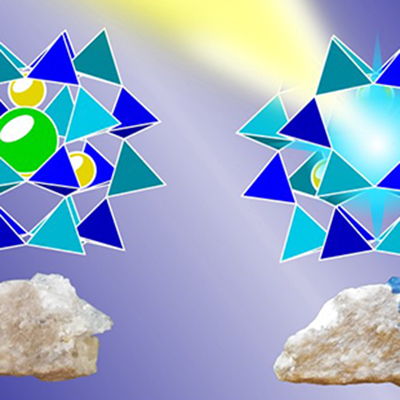Publication of the LCH in the journal PNAS on June 2, 2022. CNRS-INC communication on June 17, 2022.
In this work, the main properties characterizing the photochromism of hackmanites, tugtupites, and scapolites (three aluminosilicate natural minerals) are reported and compared. These properties are the activation energy necessary to generate the color, the absorption spectrum of the colored form, and the bleaching energy characterizing the return to a color-less mineral. An innovative joined experimental and computational approach is used to give an atomistic perspective on the origin of these properties allowing to understanding the difference of color or the lower stability of the colored form of the scapolite. It appears that the stability of the colored form is due to an unusual motion of a sodium atom, made possible by the specific structure of this mineral family, to stabilize a trapped electron responsible of the coloration. This motion is larger for hackmanite and tugtupites compared to scapolite, explaining the larger stability of the trapped electron in the two first minerals compared to the last one.

© Tangui Le Bahers
Reference: The structural origin of the efficient photochromism in natural minerals. Pauline Colinet, Hannah Byron, Sami Vuori, Juha-Pekka Lehtiö, Pekka Laukkanen, Ludo Van Goethem, Mika Lastusaari and Tangui Le Bahers PNAS, June 2, 2022.
DOI : https://doi.org/10.1073/pnas.2202487119






